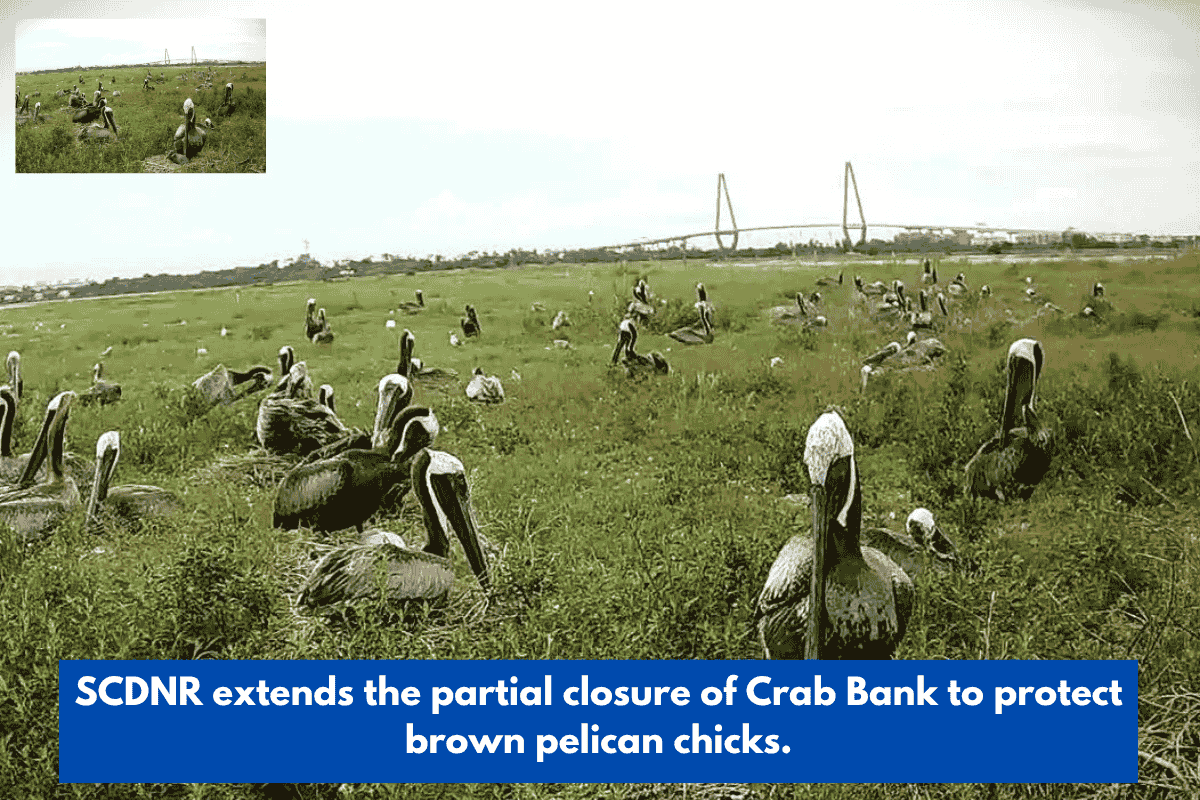Charleston, South Carolina — The eastern edge of an island near the mouth of Shem Creek will be restricted until mid-November to safeguard newly hatched brown pelican chicks.
The South Carolina Department of Natural Resources (SCDNR) has extended the seasonal closure of Crab Bank Bird Sanctuary, a seabird nesting site, due to a later nesting season for brown pelicans, who have returned to the island for the first time since 2017.
Crab Bank previously hosted 10% to 20% of all seabird nests in the state, but years of wave and storm activity, including Hurricane Irma in 2017, reduced the island’s size, rendering much of it unsuitable for nesting, according to SCDNR.
The habitat was restored in 2021 with dredged material from Charleston Harbor’s deepening, allowing American oystercatchers, black skimmers, least terns, gull-billed terns, and brown pelicans to return to nest on its coasts.
“After the restoration, the island was completely bare and lacked the vegetation that pelicans rely on for nesting,” SCDNR Wildlife Biologist Janet Thibault reported. “But over the past year, shrubs and grasses have really started to take hold, and it’s exciting to see pelicans using that new growth to build their nests and raise young on Crab Bank once again.”
Pelicans generally nest in the spring, but officials stated that because the colony hatched later this summer, many of the 155 youngsters counted by biologists are still growing on the island.
To protect the chicks, the eastern edge of Crab Bank is scheduled to be closed until November 15.
“It is critical that pelican chicks have undisturbed areas to stretch their wings and cool down by the shoreline,” said SCDNR researcher Cami Duquet. “Because they see people as threats, the chicks fear when someone gets too close, and because they cannot fly yet, they attempt to flee into harmful waves or currents. They might even regurgitate their last meal to get out faster, which could be their last nourishment for the day.”
The western end of the island, where the intertidal zone is located, will reopen to the public on October 16, as initially planned.














